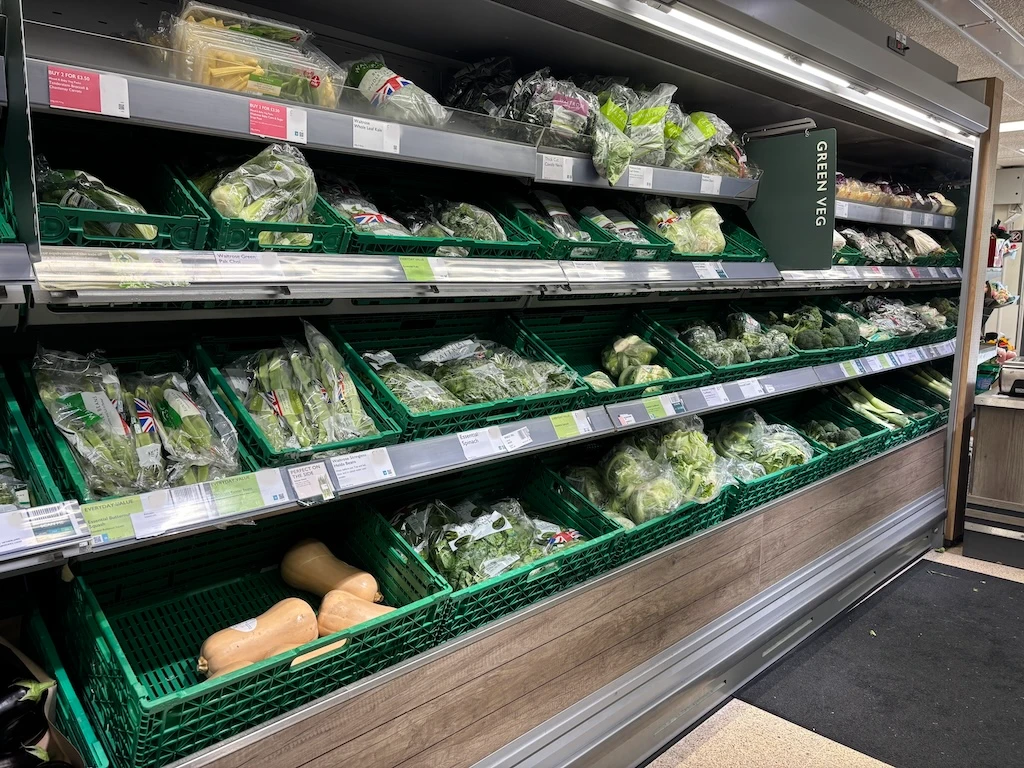What is Modified Atmosphere Packaging?

Modified Atmosphere Packaging (MAP) is a widely used food preservation technique. It involves sealing food in a package with a packaging machine that injects gas into the pack during the sealing process. The gas helps extend a product’s shelf life by slowing spoilage and reducing bacterial growth.
MAP helps food producers reduce waste, better manage stock, reach new markets, and improve packaging for transport and display.
Because the food industry has high safety requirements, Modified Atmosphere Packaging standards are strict and must be carefully monitored.
What is an example of MAP packaging?
MAP packaging suits meat, dairy, bread, fruits, vegetables, fish, and ready-to-eat foods.
Here are some examples:
- Coffee - MAP preserves the aroma and prevents rancidity
- Crisps - it prevents oxidation and keeps them crisp
- Cheese - it slows mould growth
- Sauces - it reduces microbial growth and extends shelf
- Packaged fresh meat - it keeps it looking fresh and prevents bacteria growth
- Pre-washed salad - it slows spoilage and keeps the leaves looking recently harvested.
How does Modified Atmosphere Packaging protect food?
Modified Atmosphere Packaging extends the shelf life of food by slowing bacterial growth and oxidation, which can spoil a product before it reaches the consumer.
When a product is ready to be packaged, the packaging machine replaces the atmospheric air around it with a gas mix that helps preserve its freshness.
What are the gases in Modified Atmosphere Packaging?
MAP packaging machines usually use carbon dioxide, nitrogen, and oxygen.
- Carbon dioxide slows bacterial growth
- Nitrogen displaces oxygen to stop oxidation (spoilage) and maintain package shape
- Oxygen keeps meat looking fresh and helps fresh produce breathe.
What are the advantages of Modified Atmosphere Packaging?
Here are 10 benefits of Modified Atmosphere Packaging:
- It preserves the taste, texture, and appearance of food during transport and display, keeping it fresh and appealing to consumers
- It extends a product’s shelf life
- It reduces spoilage and waste by minimising product damage and deterioration
- It enables further transport and broader distribution, opening new business opportunities
- It minimises the need for preservatives by creating an environment that naturally slows microbial growth and oxidation
- It improves food safety and hygiene by protecting the food from spoilage, contamination, and foodborne illness
- It meets the consumer demand for more natural foods, free from preservatives, antioxidants, and additives
- It allows to design transparent and attractive packaging
- It improves supply chain efficiency and reduces carbon footprint
- It enhances distributor and consumer trust by ensuring consistent product quality.
What are the disadvantages of Modified Atmosphere Packaging?
MAP packaging also has some disadvantages.
- The packaging costs are higher because MAP requires the use of expensive gases and high-quality films, as well as attentive quality control
- It’s not suitable for all food types - for example, high-moisture products, like fresh seafood or cooked rice, create conditions that support the growth of anaerobic bacteria
- Once the package is open, MAP is no longer effective
- It requires specialised machinery and trained, skilled staff
- In some cases, it requires temperature control (usually cooling) to remain effective
- It’s a somewhat complex process that can fail in case of leaks or contamination.
However, modern MAP technology and gas analysers allow you to overcome many of these disadvantages.
New packaging testing instruments allow you to perform gas, leak, and burst tests sequentially, streamlining the MAP and quality control processes and saving time.
Modern flow optimisers allow you to use the minimum amount of gas required to keep a product fresh and meet food safety and hygiene standards.
Why is nitrogen used in Modified Atmosphere Packaging?
Nitrogen is used in MAP because it’s a non-reactive gas that displaces oxygen, helping slow spoilage and oxidation. Nitrogen also maintains internal pressure, supporting package structure (its shape).
A 100% nitrogen concentration is used for packaging crisps, roasted coffee, nuts and seeds, dry pasta and rice, powdered milk, and snack bars. This concentration prevents oxidation, protects coffee aroma, and prevents insect infestation.
Nitrogen is also used in conjunction with other gases, like carbon dioxide and oxygen, to extend the shelf life of dairy and bakery products and processed meats like ham and sausages.
Why is carbon dioxide used in Modified Atmosphere Packaging?
Carbon dioxide is used for preserving fresh foods like dairy and bakery products because it reduces mould and bacteria growth by disrupting microbial metabolism (when bacteria and other microbes break down nutrients to grow).
A high percentage of carbon dioxide (up to 60%) stops the growth of microbes and spoilage, keeping seafood fresh.
A 20 to 60% carbon dioxide concentration inhibits mould growth, keeping bakery products fresh for longer.
Carbon dioxide is also used with a mix of nitrogen and oxygen to extend the shelf life of products like ready meals, fresh meat, and poultry.
Why oxygen is used in Modified Atmosphere Packaging?
Oxygen is mainly used to preserve red meat and fresh produce because it’s highly reactive (food substances chemically interact with it) and essential in preventing anaerobic metabolism (when cells produce energy without oxygen, leading to food spoilage).
Because oxygen is naturally present in the air atmosphere, a packaging machine works to remove a certain amount of ambient air from the package and inject a controlled gas mixture into it.
A high percentage (usually 60 to 80%) of oxygen stabilises oxymyoglobin, maintaining the bright red colour of red meat, which would otherwise turn brown.
Low oxygen levels (about 2 to 5%) help fruits and vegetables keep breathing after harvest by preventing anaerobic metabolism, which can cause produce to spoil, become soft, or produce gases.
Medium to low levels of oxygen are also used, along with nitrogen and carbon dioxide, to preserve white meat, fish, seafood, bakery products, cheese, and ready meals.
